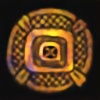HOME | DD
 Null-Cipher — plato's cave simulated
Null-Cipher — plato's cave simulated

Published: 2006-04-24 03:37:27 +0000 UTC; Views: 2892; Favourites: 40; Downloads: 78
Redirect to original
Description
The Allegory of the Cave1. Plato realizes that the general run of humankind can think, and speak, etc., without (so far as they acknowledge) any awareness of his realm of Forms.
2. The allegory of the cave is supposed to explain this.
3. In the allegory, Plato likens people untutored in the Theory of Forms to prisoners chained in a cave, unable to turn their heads. All they can see is the wall of the cave. Behind them burns a fire. Between the fire and the prisoners there is a parapet, along which puppeteers can walk. The puppeteers, who are behind the prisoners, hold up puppets that cast shadows on the wall of the cave. The prisoners are unable to see these puppets, the real objects, that pass behind them. What the prisoners see and hear are shadows and echoes cast by objects that they do not see.
From Great Dialogues of Plato: Complete Texts of the Republic, Apology, Crito Phaido, Ion, and Meno, Vol. 1. (Warmington and Rouse, eds.) New York, Signet Classics: 1999. p. 316.
4. Such prisoners would mistake appearance for reality. They would think the things they see on the wall (the shadows) were real; they would know nothing of the real causes of the shadows.
5. So when the prisoners talk, what are they talking about? If an object (a book, let us say) is carried past behind them, and it casts a shadow on the wall, and a prisoner says “I see a book,” what is he talking about?
He thinks he is talking about a book, but he is really talking about a shadow. But he uses the word “book.” What does that refer to?
6. Plato gives his answer at line (515b2). The text here has puzzled many editors, and it has been frequently emended. The translation in Grube/Reeve gets the point correctly:
“And if they could talk to one another, don’t you think they’d suppose that the names they used applied to the things they see passing before them?”
7. Plato’s point is that the prisoners would be mistaken. For they would be taking the terms in their language to refer to the shadows that pass before their eyes, rather than (as is correct, in Plato’s view) to the real things that cast the shadows.
If a prisoner says “That’s a book” he thinks that the word “book” refers to the very thing he is looking at. But he would be wrong. He’s only looking at a shadow. The real referent of the word “book” he cannot see. To see it, he would have to turn his head around.
8. Plato’s point: the general terms of our language are not “names” of the physical objects that we can see. They are actually names of things that we cannot see, things that we can only grasp with the mind.
9. When the prisoners are released, they can turn their heads and see the real objects. Then they realize their error. What can we do that is analogous to turning our heads and seeing the causes of the shadows? We can come to grasp the Forms with our minds.
10. Plato’s aim in the Republic is to describe what is necessary for us to achieve this reflective understanding. But even without it, it remains true that our very ability to think and to speak depends on the Forms. For the terms of the language we use get their meaning by “naming” the Forms that the objects we perceive participate in.
11. The prisoners may learn what a book is by their experience with shadows of books. But they would be mistaken if they thought that the word “book” refers to something that any of them has ever seen.
Likewise, we may acquire concepts by our perceptual experience of physical objects. But we would be mistaken if we thought that the concepts that we grasp were on the same level as the things we perceive.
...........................................................................
light installation
3d object, 2d shadow
I wonder what 4d object, 3d shadow would be
Hebrew taken from the first paragraph of genisis
materials: plexiglass, acrylic paint, light on a stick
hope you{sombody} like it





Related content
Comments: 15

It is a very interesting scuplture but I don't completly understand how this ties into the reflections upon the cave wall (nor why it's in Hebrew, but I can except that as artistic license
👍: 0 ⏩: 0

i feel in love with Plato in the 7th grade.
<3333333333333333333333333333333333333333 333333333333333333
👍: 0 ⏩: 0

It's interesting to see different interpretations of the Allegory. In Philosophy we looked at it as the chained people being the general mass of the population, obviously, whose perceptions are skewed, just like you said. But we focused more on the one who ventured out of the cave into the blinding sunlight as being...an enlightened one, an intellectual who strays from dogma, from just accepting those shadows as reality and judging everyone from them. Of course our teacher was like, "How about we all draw what we think the cave looks like" which garnered several bad pictures with groups of stick figures but this is a very interesting interpretation and piece. I admire anyone who is inspired by literature or anything that came before him/her; it encourages others to expose themselves to classic literature, philosophy, older artworks, etc. rather than just tv and daily life. Really anything that strays from dogma I enjoy. I hate to just accept what is put before me...I want to find my own truths :-P
Well that was a roundabout way of saying nice work. Have you thought about putting a lightsource inside the cube itself? I mean, that would stray from the Plato reference since there was only one wall with shadows in the allegory but....
What made you choose Genesis to actually paint on there?
👍: 0 ⏩: 0

very cool, I love it in its relationship to platos cave.
👍: 0 ⏩: 0

Heh, I have to do this in RS. In some ways I wish I didn't have to study it, because that means it's turned into an acedemic dredgery. I'd prefer to discover it myself. But then I might not have come across it in the first place...hmm.
Anyway this is really nice and is a new interpretation of the allegory which I like. Well executed.
👍: 0 ⏩: 0

that's ok with me................................................................................................................................
~
👍: 0 ⏩: 0

damn, turned out awesome. lulu's crit makes no sense. and....FLAME WAR!!!! BLAHH
👍: 0 ⏩: 0

I love the composition of the tryptic, luv, but the middle panel appears needs some color correction. the red around the light looks like lense flare, and although you have anologly captured that, i think making the light a bit more cool rather than warm would have a cool effect, like a calming green. I apreciate the use of genesis.
👍: 0 ⏩: 1

It's an instalation really where you get to wave the light across the cube and get the shadows to dance maybe when I get it back you can try it out... I didn't really want to mess much with the still images but I will think about that more.
he saw the light and it was good, God divided the light from the darkness
👍: 0 ⏩: 0

























